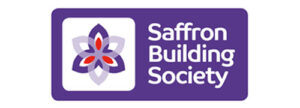 Over the past few years, we have seen a growing trend of consumers and businesses becoming more sustainably minded. As people start carrying this mindset into all aspects of their lives, it makes sense that they are considering sustainability when purchasing a home. But how can brokers help customers improve the energy efficiency of their homes and subsequently raise the standard of the nation’s housing stock?
Over the past few years, we have seen a growing trend of consumers and businesses becoming more sustainably minded. As people start carrying this mindset into all aspects of their lives, it makes sense that they are considering sustainability when purchasing a home. But how can brokers help customers improve the energy efficiency of their homes and subsequently raise the standard of the nation’s housing stock?
Working With What You Already Have
A growing number of lenders are rewarding borrowers with lower interest rates for moving into new-build properties that have a good EPC rating. However, more than a fifth (21%) of carbon emissions come from the UK’s existing housing stock. To truly tackle the root of the issue, we should encourage owners with older homes to improve the energy efficiency of their properties.
To this end, Saffron introduced a Retro Fit mortgage in May 2020 for those with properties at the lower end of the EPC scale. The product offers borrowers lower rates for bringing their EPC rating up to an E standard within six months. It can be an attractive option for customers looking to make their property more green and energy efficient while reducing their energy bills. Brokers with customers who are sustainably minded should be aware of options like this and discuss them with their clients to help them find a solution that best suits their ethical and homebuying needs.
Starting Afresh: Self Build and Custom Build
An alternative to buying an older property and improving its energy efficiency is to build your own home with sustainability in mind from the outset. According to the NSBRC, more than 13,000 people did this in 2022 – 1,000 more than six years earlier in 2016.
TV shows like the Channel 4’s Grand Designs have raised the profile of self-build as a way to design and build a property. However, while the show has raised awareness about this approach, it has also created an image of these projects being complex and out of reach for the average buyer. In reality, self-build is an option for people on all types of budgets.
Those who proceed with a self- or custom-build project are likely to stay in their property for longer because they are bespoke to their needs, but they often design their homes with the latest energy efficiency measures in mind too. A recent report from NaCSBA (The National Custom & Self Build Association) revealed just how green self-builds can be. EPC data highlighted that the energy consumption for self- and custom-build properties could be up to 42% lower than a typical new build property, while producing up to 43% fewer CO2 emissions.[1]
As self- and custom-build projects become a viable avenue for sustainable homeownership, lenders and brokers need to understand how they can cater to this growing market. At Saffron, we believe there is a real opportunity here for brokers and lenders alike. By providing the capital borrowers need, we can help them install energy efficient measures and use environmentally friendly building materials from the outset.
Greener Together
As people’s tastes and priorities shift and sustainability becomes more and more important, the mortgage industry needs to adapt. At Saffron, we’re constantly reviewing how we can best support brokers and have provided a number of resources including guides, webinars, and thought leadership pieces, which can be found on our website. Lenders and brokers can come together to support individuals in driving a more sustainable future – whether that be through improving their existing homes or building tailored energy efficient properties.
[1] Source: NaCSBA (National Custom & Self Build Association) Custom and Self build market report 2023-24
